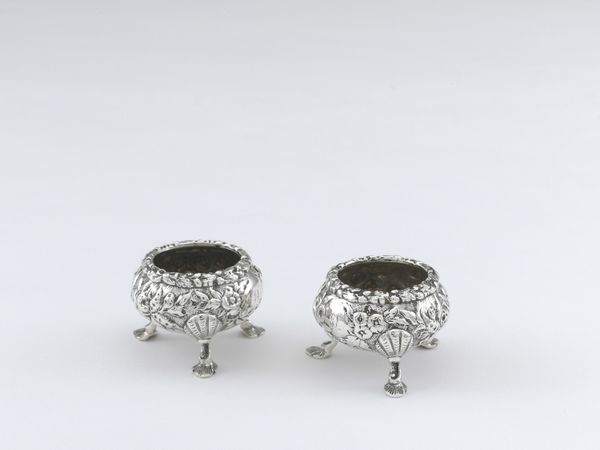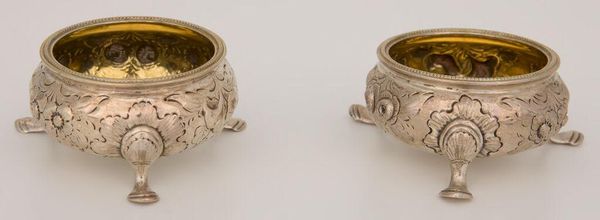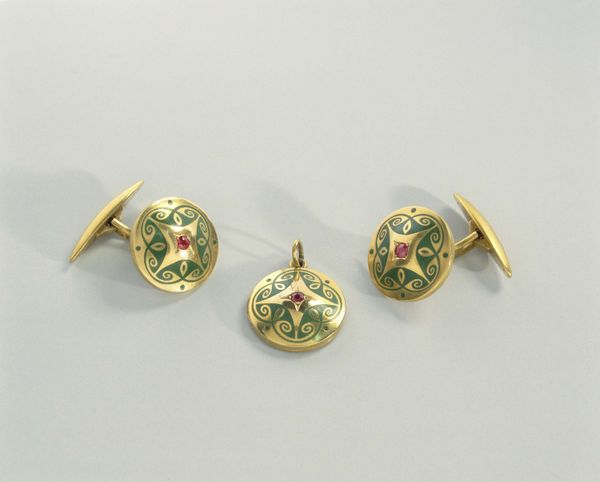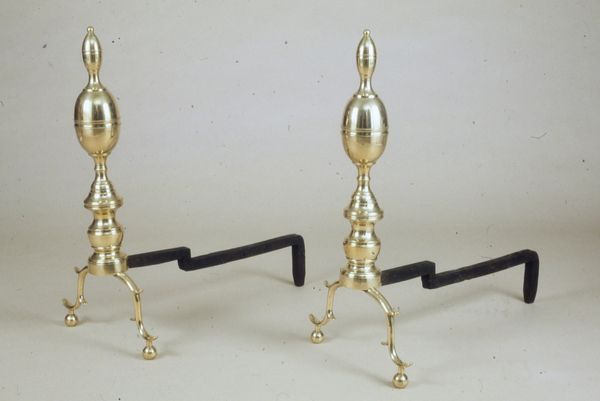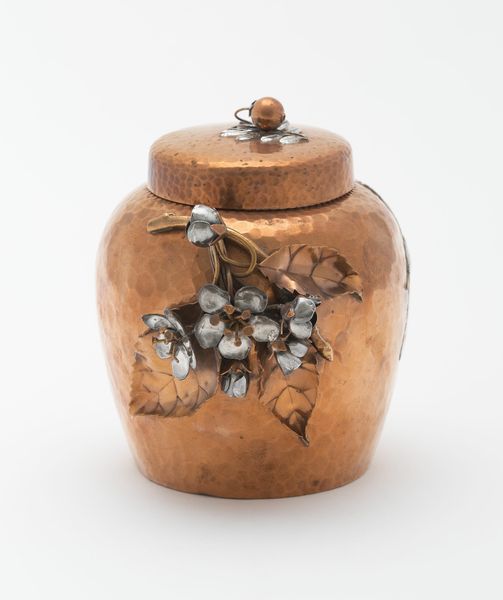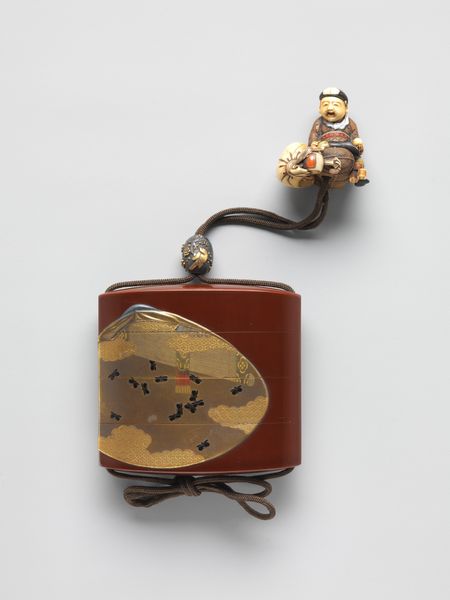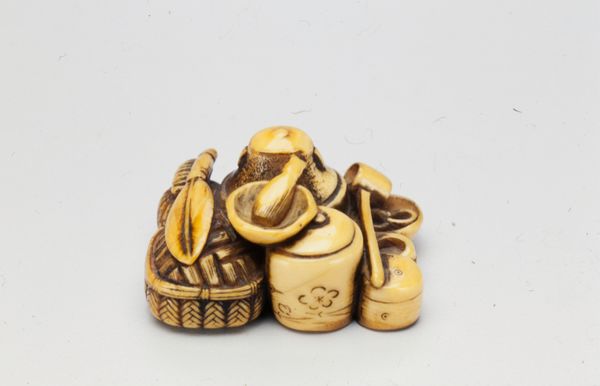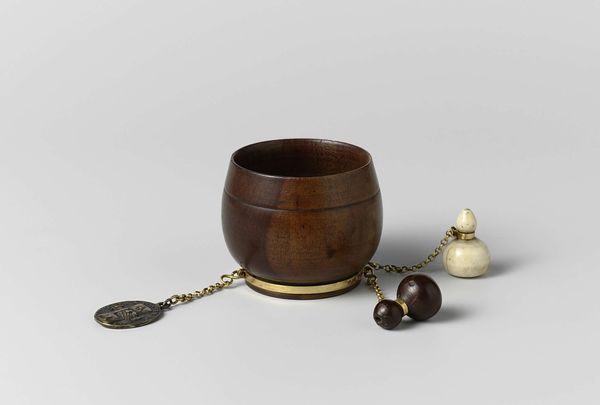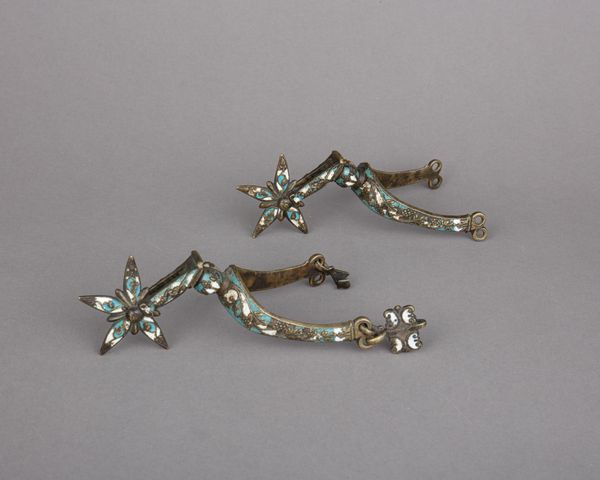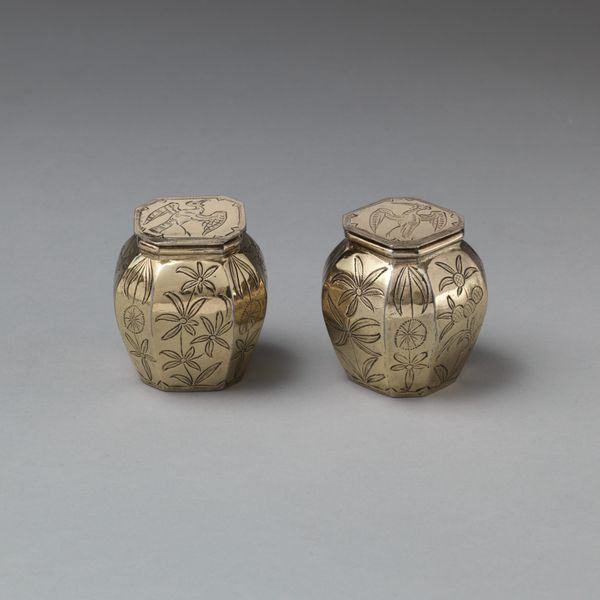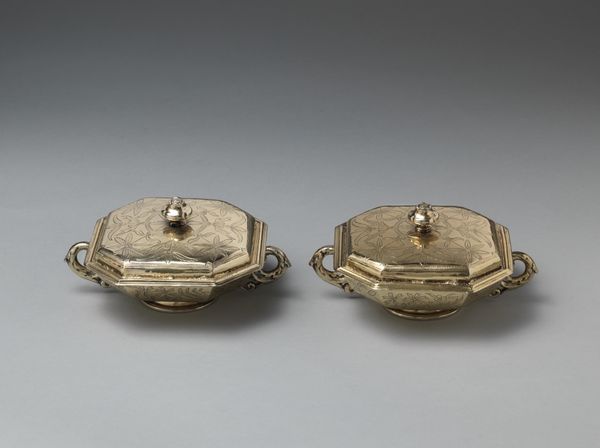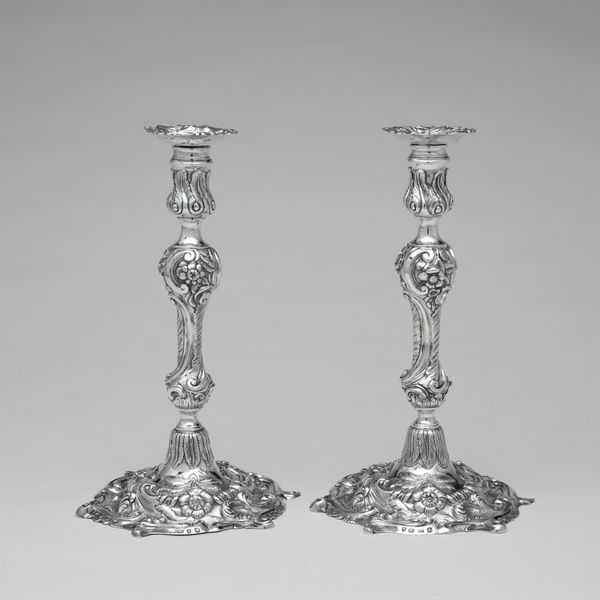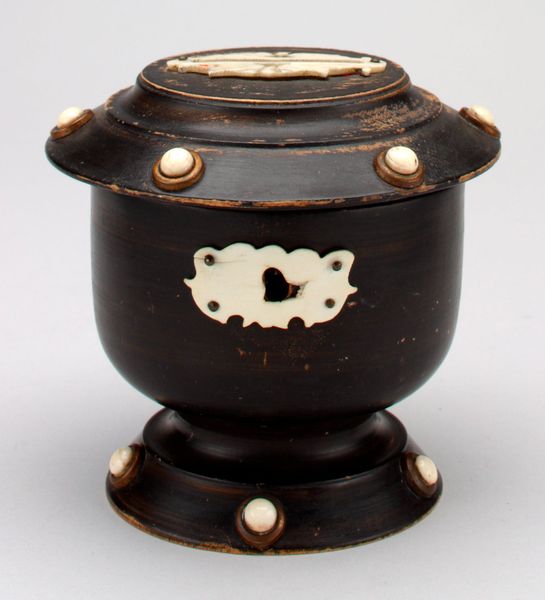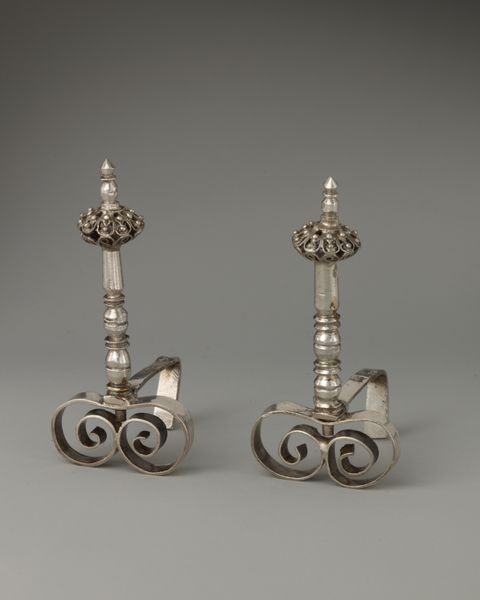
fibre-art, metal, weaving
#
fibre-art
#
metal
#
sculpture
#
weaving
#
jewelry design
#
indigenous-americas
Dimensions: 1 7/8 × 13/16 × 13/16 in. (4.76 × 2.06 × 2.06 cm) (each, approx.)
Copyright: No Known Copyright
Curator: These miniature woven baskets crafted into earrings immediately suggest a convergence of adornment and cultural expression. The Minneapolis Institute of Art holds this "Pair of Earrings," dating back to around 1920. Editor: I'm struck by how delicate they appear. The fine weaving, the small beads… they evoke a sense of intricate skill and attention to detail, don't they? A very intimate scale. Curator: Indeed. The diminutive size speaks to a personal connection, almost a secret language held within the object. Consider the symbolic resonance of baskets within Indigenous cultures of the Americas, these hold sustenance, and offer a connection to the land. Turning them into jewelry reframes this symbolism, making it a daily adornment. Editor: Do we know more about their specific origins or community ties? The transition from utilitarian object to wearable art is quite compelling, hinting at broader socio-cultural shifts. I can’t help but think about issues of cultural appropriation. Curator: Unfortunately, specific origins are unknown, though the use of steel alongside fibre, ceramic, and metal point towards intercultural exchanges typical in the early 20th century United States. I see them as a form of subtle resistance, perhaps—a quiet assertion of cultural identity. These earrings recontextualize those original art intentions, making their artistic nature much more explicit, rather than functional or spiritual as weaving usually seems to connote. Editor: That’s fascinating to consider, given that they now reside within an institution. These miniature sculptures become artifacts in a museum vitrine. The power dynamic shifts considerably in this setting, making a statement on tradition, heritage, and display in an increasingly modernized world. Curator: Absolutely, and by becoming a display object, the intimate significance of weaving techniques, perhaps specific to certain hands and practices is preserved and continues to resonate beyond its initial context. What did this process mean in its original location, as something that may be now gone, and whose memory we keep alive when observing the object? Editor: Exactly. They hold so much potential as vessels of continuity, inviting us to remember. Thanks for the insights! Curator: My pleasure.
Comments
No comments
Be the first to comment and join the conversation on the ultimate creative platform.
